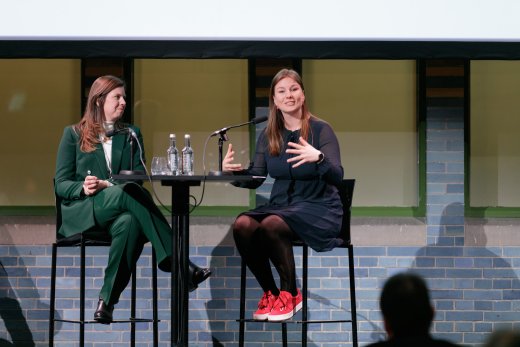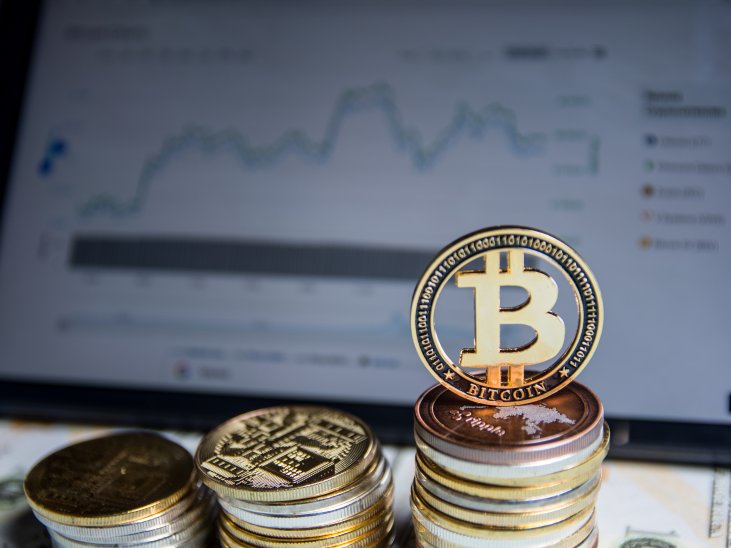The Future of Payments: How to avoid ‘Uberisation’?

The 2022 edition of Euroforum’s annual conference on the future of payments was held in Amsterdam on 31 March. It was the biggest edition so far, attracting over 250 attendees. INNOPAY’s Josje Fiolet was among them, and she has written a blog to share the key insights from the conference. The focus was clearly on the future, looking at how both existing and new technologies are taking shape and finding their way into consumers’ daily lives.
As I entered the beautiful venue – the Beurs van Berlage, Amsterdam’s historic former stock exchange building – I realised that this was my first live event since the Annual Payment Conference in September 2021. Time flies! And while the world of payments might never go back to the ‘old normal’, the world of events seemingly will, since the attendees were obviously enjoying shaking hands, sitting and standing close together again, and just generally interacting in real life at long last.

Disruption is coming
The event got underway in style at 9 a.m. with a keynote titled ‘Disruption is Coming’ by Johan Pauwelse, associate professor at Delft University and director of the biggest blockchain lab in Europe. He made no bones about it: we can do way better than our current performance in terms of KYC effectiveness or instant global payments, for example. His key message was that the financial industry needs to take urgent action to avoid experiencing similar disruption as has occurred in the taxi industry with Uber and the travel industry with Airbnb. As a solution, he stressed the need for a shared, fully decentralised trust infrastructure that is used by everyone but owned by no one.
The European Payment Initiative (EPI) acknowledged the need for European financial players to innovate and to guard against the dominance of the (non-European) card schemes and Big Techs. Martina Weimert, CEO of EPI, mentioned that the eight local card schemes are all losing market share, especially in e-commerce due to strong competition.
Visa and Mastercard have a quasi-monopoly, particularly on European cross-border transactions, which raises concerns about control, transparency and sovereignty. With the roll-out of instant payments not yet materialising in Europe, 22 shareholders decided to join forces and invest in EPI. After some setbacks caused by shareholder banks withdrawing, they have been forced to assess alternative scenarios.
Going forward, EPI will focus on building a multifunctional wallet encapsulating a digital payment solution based on account-to-account (A2A) SEPA Credit Transfer (SCT) Instant, where cards are included. The focus will be on merchant readiness for instant payments, narrowing the gaps in the rulebooks in close collaboration with merchants. What merchants want above all is one interface, a one-stop shop, instead of local integrations. With a €50 million innovation budget, EPI is willing and able to help merchants solve the challenges.
As another response to the dominance of the big players, over a hundred central banks are currently working on developing Central Bank Digital Currencies (CBDCs). During the on-stage panel discussion, CBDCs were likened to cash, just in a digital format; whereas money in your bank account gives you a claim at a commercial bank, a CBDC gives you a claim at the central bank. With cash circulation decreasing, central banks are keen to retain control of the monetary system and safeguard financial stability.
The panel members had varying opinions about how this should be done. Does the technology need to be blockchain? Do you need a bank account? And are we focusing too much on the risks rather than the opportunities to provide a better consumer experience? Although these questions are still the topic of much debate, compared to last year’s edition of the event there is a clearer overriding message: digital currencies are here to stay.
The dominant (non-European) card schemes are not resting on their laurels either. For example, Visa and Crypto.com are building bridges between the ‘old’ and ‘new’ worlds, while Mastercard and Visa are also entering the domain of debit payments and instalments in response to customer demand.

The optimal payment mix: balancing consumer and merchant demands
With payments being a two-sided market, payment providers and financial institutions need to follow (and shape) both consumer demand and merchant demand. On the consumer side, the core issue appears to be speed and simplicity of payments, and the dominant trend driving new payments behaviour seems to be embedded payments. Whereas one-click payments were the ambition at the previous event, things have now advanced towards invisible payments; after presenting their payment card upon entering a supermarket, for example, consumers can simply shop for all the groceries they need and walk out – no cashier/staff required. Another key driver from the consumer perspective is payment flexibility, which is stimulating the trend towards Buy Now Pay Later (BPPL) solutions.
These trends mean that merchants need to constantly re-evaluate the optimal payment mix. Whereas flexibility, speed and simplicity are the top priorities for consumers, merchants deem price, risk and reach as essential when selecting a payment method. In terms of reach, merchants at the conference indicated that they would like iDEAL, for example, to have broader European coverage. This would also reduce the integration complexity. Currently, merchants have to integrate payment solutions in every market they are active in, and this was mentioned as one of the key headaches in a survey of merchants conducted by EPI.

From PSD2 to PSD3?
Needless to say, as one of the key regulatory developments and still under review, PSD2 was also on the agenda. The revision is taking place in parallel with the regulatory proposals on Open Finance, Open Data, Digital Euro and Instant Payments. The expected outcome towards the end of this year is that specific parts of PSD2 will be changed, that additional regulations will potentially be introduced and/or that the Level 2 regulations (EBA Regulatory Technical Standards) will be adjusted. Due to the lack of radical differences, there are some reservations about calling it ‘PSD3’.
The agenda also included the revision of eIDAS, presented by our own Vincent Jansen. He explained the developments in the EU Digital Identity wallet and how to prepare for its impact. The overall idea is that a ‘common toolbox’ will be developed to achieve interoperability of wallets across Member States. The EU Digital Wallet will come with mandated acceptance and will place significant restrictions on digital identity and/or data custodian services. The deadlines for implementation could be somewhere in 2024 but the timelines appear very ambitious. Nevertheless, work is well advanced and should be followed closely by financial institutions, not only because they will be impacted but also because they themselves could become recognised digital identity wallets, which, moreover, would not have to be limited to Digital Identity only. Opportunities..!
Sometimes it’s difficult to pinpoint the direct improvements following regulation, but this was not the case during the Financial Intelligence Unit’s session on the role of financial institutions as gatekeepers. Multiple cases showed that major crimes can be prevented by analysing the data effectively. For example, a PSP who had a number of customers selling flowers analysed the data looking for outliers, and found one: a customer who seemed to earn their revenue at night, whereas all others generated sales during the day. Further investigation revealed this to actually be a drug operation. Another case illustrated how a major terrorist financing network had been uncovered. Both of these cases started with the investigation of a single transaction. There was consensus among the audience that a different mindset is needed, and that this should also be stimulated by the supervisory bodies. Above all, data science and analysis is key!

New applications of tech to attract people across the generations
It was inspiring to see the presentation of some new technologies and their applications. In particular, augmented reality and virtual reality now seem to be really taking off and could significantly change the commerce and payment experience. The Metaverse was mentioned more than once, with H&M as one example of a retailer opening a fully functioning online shop in this virtual space. These developments will be especially relevant for the ‘Zoomers’ (the successors to the millennial generation) and ‘Silver Surfers’ – the over-55s who used to be referred to as ‘Boomers’. Apparently, the name of this generation has changed to reflect the fact that they are much more tech-savvy than they are given credit for – so businesses should not overlook them, as they are a potentially lucrative target segment. Speaking on stage, Wijnand Jongen’s key message was that rather than trying to bring the consumer into the organisation’s world, companies should bring their organisation into the consumer’s world.
Still on the topic of generations, it was my great pleasure to moderate a session with young payment professionals towards the end of the day. All aged under 30 and each with approximately two years of experience in payments, high potentials from Worldline, ABN AMRO Bank and Enigma Consulting took the stage to reflect on their key takeaways from the event. They were optimistic about the future, seeing Open Banking as providing new revenue opportunities, and Instant Payments – based on one click and seamless checkout – spreading throughout Europe to meet the need for speed and a sublime customer experience.
I would like to encourage young professionals to not only continue to participate in these types of events, but also to share their views throughout the year.







